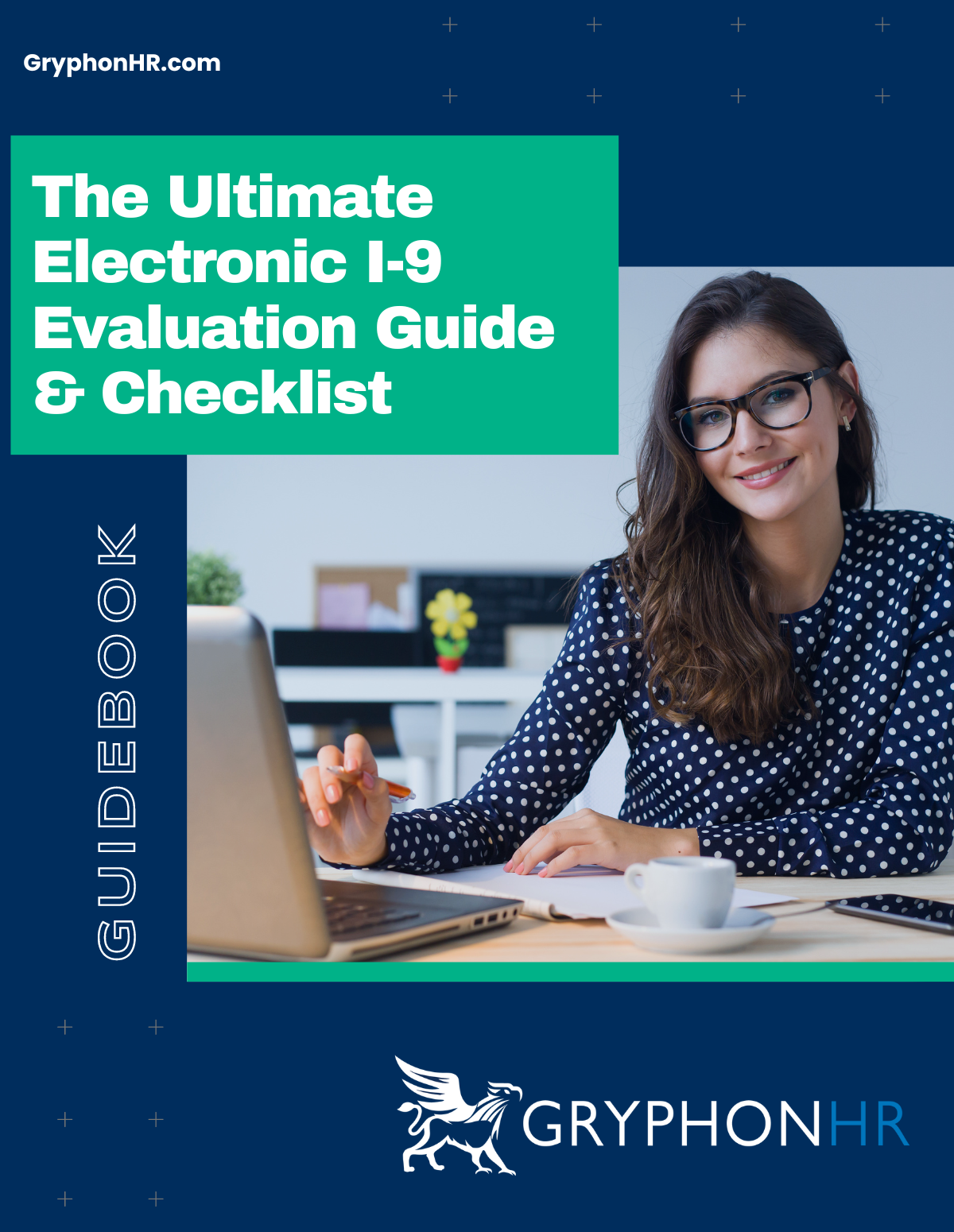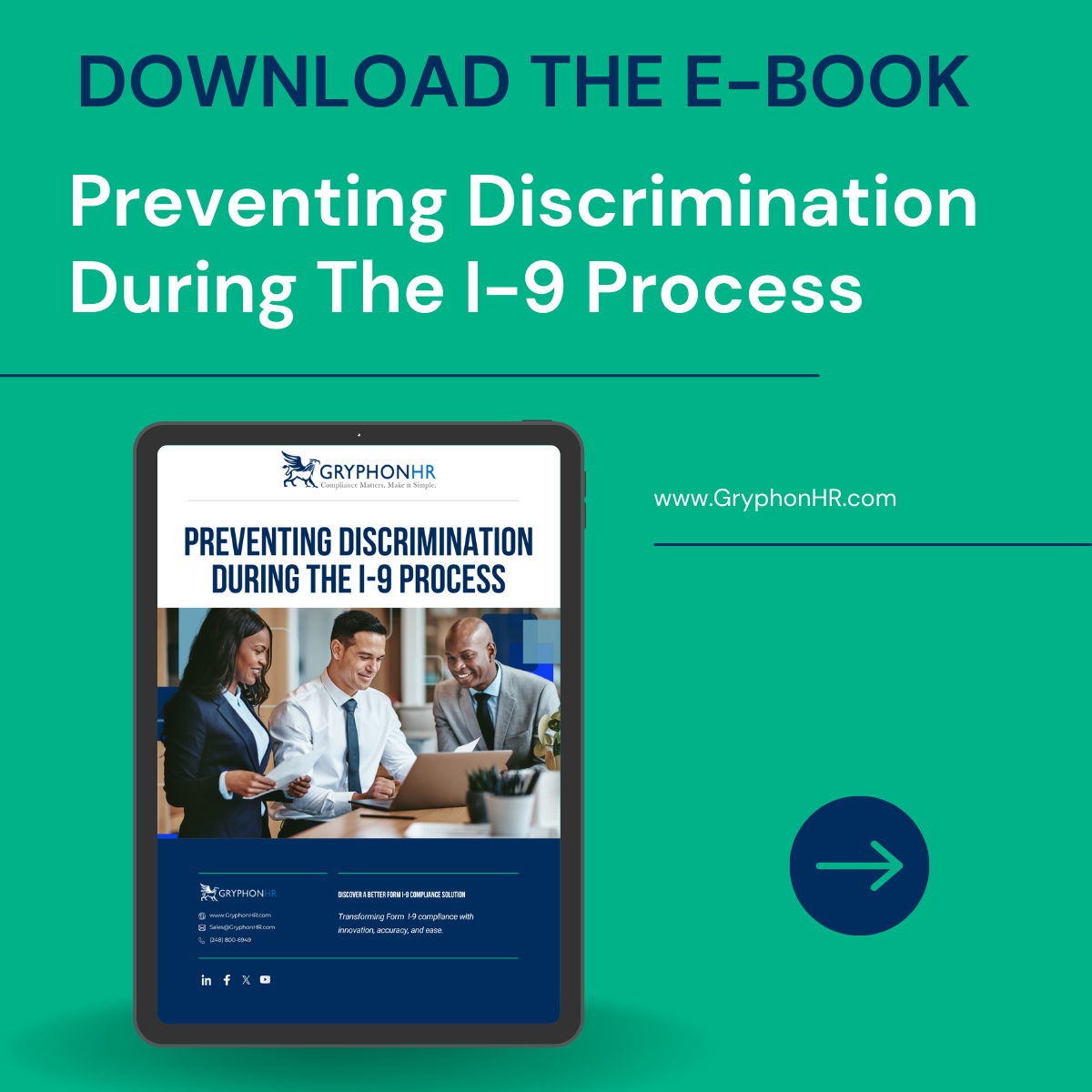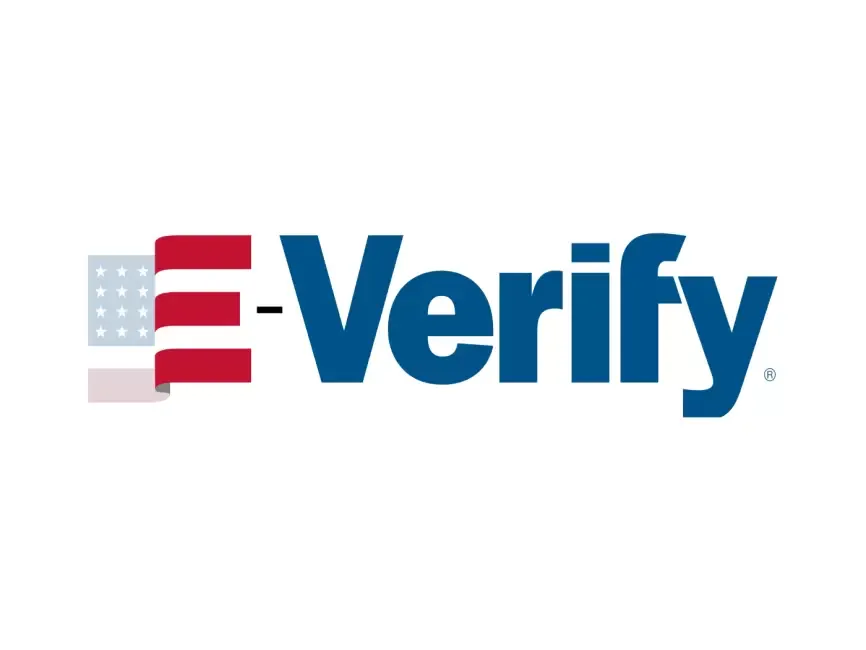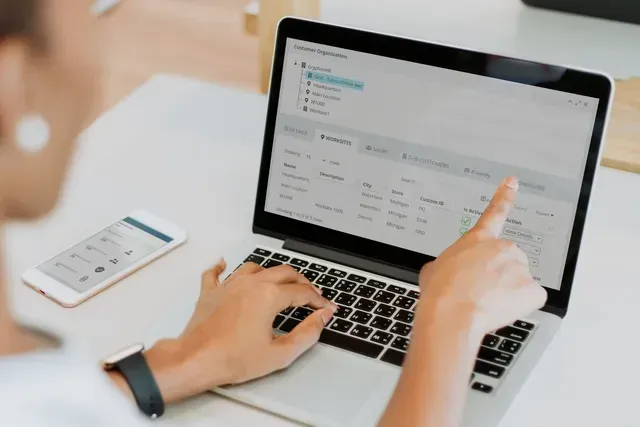Authored By: GryphonHR Blog Contributor
GryphonHR blog contributors include , consultants, researchers, and other subject-matter experts who’ve written content for our blog.
February 9, 2024
As remote work becomes increasingly prevalent, employers are confronted with the task of adapting their onboarding processes to meet the demands of remote I-9 requirements. Fortunately, for those enrolled in E-Verify and in good standing, a viable solution exists to facilitate the remote examination of employee documentation through a DHS-authorized alternative procedure. This process hinges on the designation of authorized representatives, ensuring a seamless and compliant approach to remote I-9 verification.
Central to the remote I-9 verification process is the designation of authorized representatives who can assist in verifying employee documentation on behalf of the employer. These representatives play a pivotal role in ensuring the accuracy and compliance of the remote verification process. However, it's essential to note that while any individual can review work authorization and identification documents and complete Section 2 of Form I-9, the employer remains ultimately responsible for any errors or violations.
To facilitate the smooth operation of remote I-9 verification, employers must establish a set of robust standards that govern the actions of both authorized representatives and employees. This includes outlining the precise order in which the Form I-9 will be completed remotely, ensuring that it is attested to by the representative and verified by a company leader. Additionally, formal written contracts between the organization and authorized representatives can provide further clarity on roles and responsibilities.
Before embarking on the remote I-9 process, it is imperative for employers to confirm their enrollment in E-Verify and ensure they are in good standing. Compliance with E-Verify requirements forms the foundation for the remote I-9 procedure.
To comply with remote I-9 requirements, employers should meticulously examine copies of Form I-9 documents or acceptable receipts. It's crucial to verify that the documentation appears genuine and relates to the individual presenting it.
Conducting a live video interaction with the individual presenting the document(s) is a crucial step in the remote I-9 verification process. This ensures not only the authenticity of the documentation but also its direct relevance to the individual. Prior to the live video interaction, the employee should transmit a copy of the document(s).
Complete the corresponding box on Form I-9 to indicate that an alternative procedure was used for documentation examination. Retain clear and legible copies of the documentation for record-keeping purposes.
Maintaining consistency in applying remote I-9 verification procedures across all employees, particularly those at E-Verify hiring sites, is essential. However, physical examination procedures can continue for onsite or hybrid employees. Section 2 of Form I-9 must be completed within three business days from the date of hire for paid work.
Employers must avoid any form of discrimination based on citizenship, immigration status, or national origin during the remote I-9 verification process. All employees should be treated equally, and employers should adhere strictly to the Lists of Acceptable Documents outlined in Form I-9 instructions.
In conjunction with the remote I-9 verification process, employers must be well-versed in the acceptable documents outlined in Form I-9 instructions. Employees are granted flexibility in presenting documentation from the Lists of Acceptable Documents, and employers must avoid requesting additional or different documents beyond those required.
In anticipation of a Form I-9 audit by federal government officials, employers must be prepared to provide clear and legible copies of identity and employment authorization documentation obtained during the remote I-9 verification process.
By diligently following these steps, employers can seamlessly comply with remote I-9 requirements while ensuring a fair and non-discriminatory approach to document verification. Embracing these practices not only fosters compliance but also streamlines the onboarding process in an era where remote work is increasingly prevalent. For further information on compliance during the remote I-9 process, employers are encouraged to read our white paper: Form I-9 and Remote Hiring, and explore our unique remote I-9 capabilities and authorized representative support, designed to streamline Form I-9 procedures with greater ease, accuracy, and compliance.

Authored By: GryphonHR Blog Contributor
GryphonHR blog contributors include , consultants, researchers, and other subject-matter experts who’ve written content for our blog.
Stay updated on Form I-9 and E-Verify!


Is your I-9 compliance software placing you at risk? Learn more about the compliance requirements for electronic I-9 systems and how to evaluate important features. Skip the form and download this interactive guide!

Avoiding discrimination during the Form I-9 process is critical to preventing liability, hefty fines, and unfair hiring practices. Download our free e-book to learn more.



MENU
STAY CONNECTED
Join our newsletter to learn more about Form I-9.